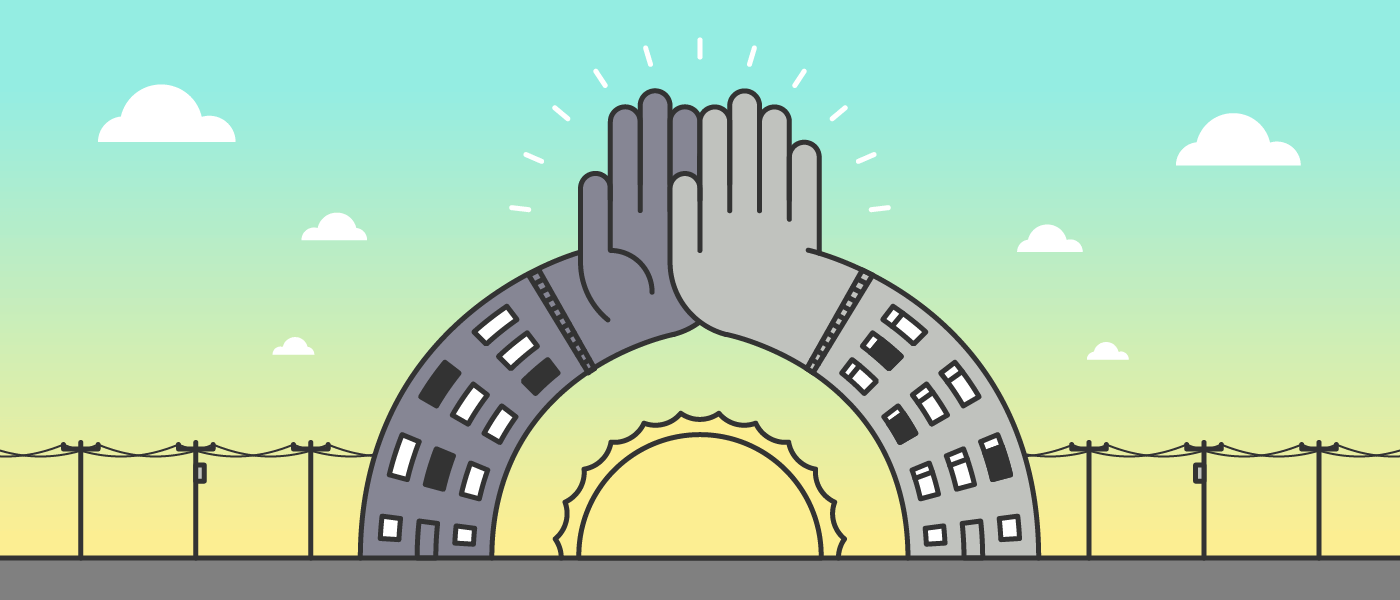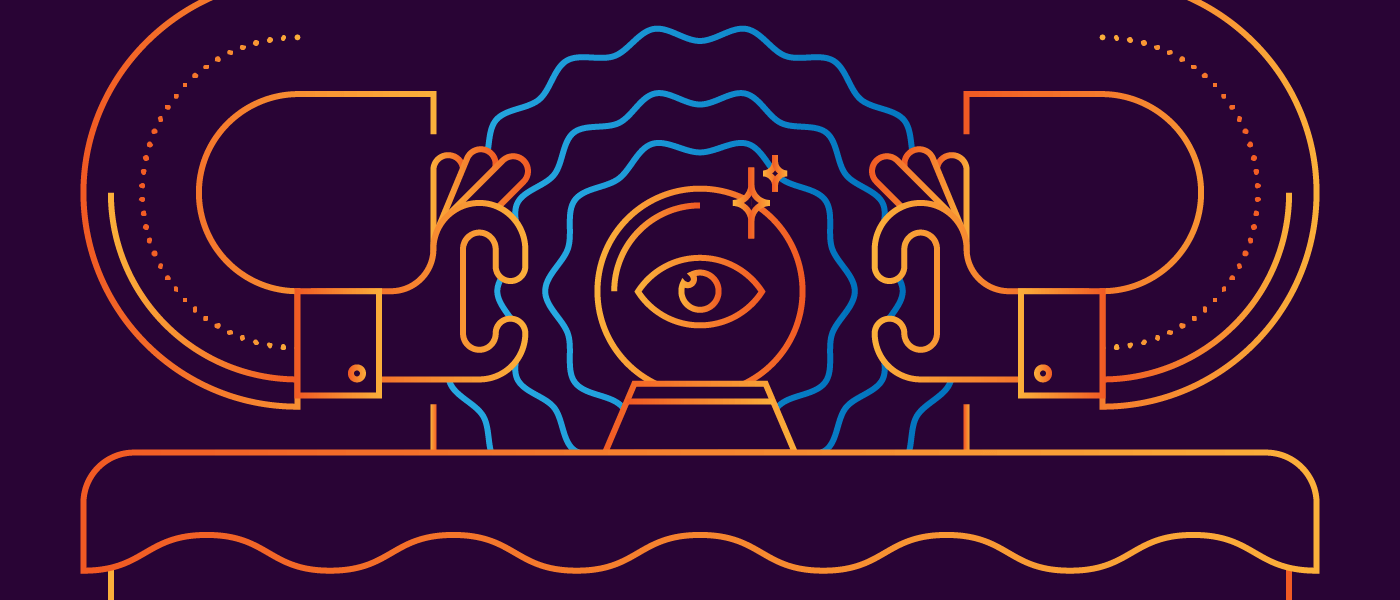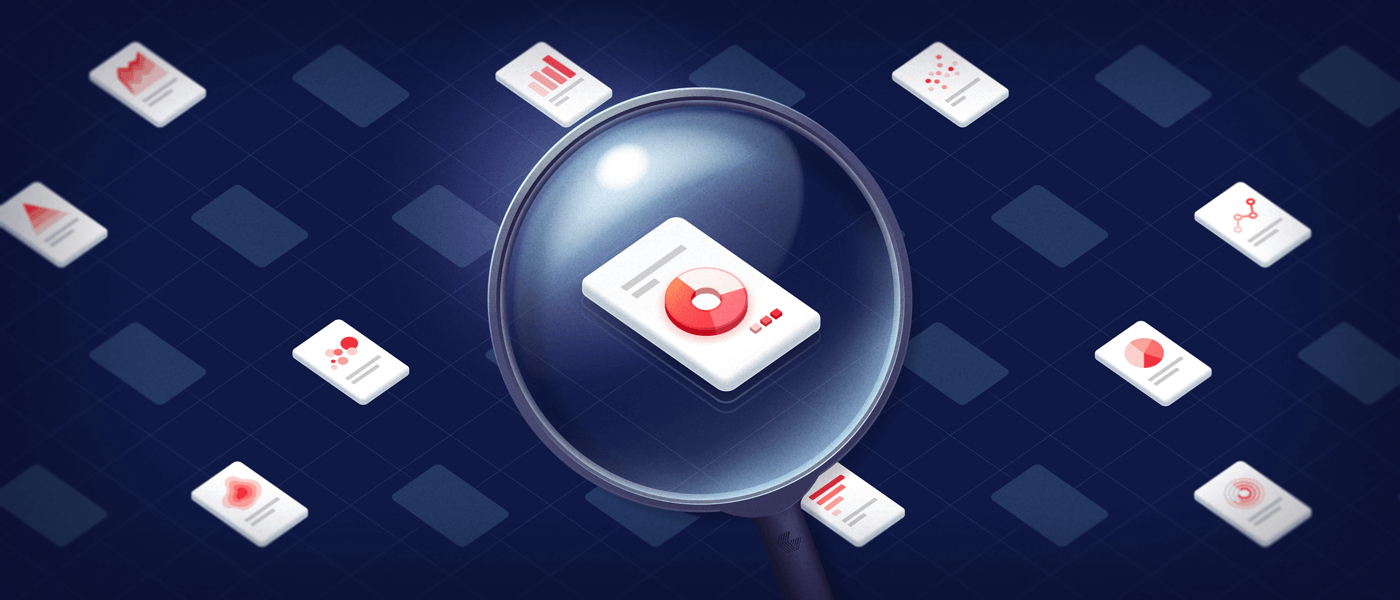We’ve made thousands of infographics with tons and tons of people, and we can say definitively that one of the biggest things that can make or break an engagement is the working relationship between a brand and an infographic design company. No matter how great the content, clashes over creative vision, lack of communication, or downright bad vibes can sabotage it in a major way. We’re huge proponents of healthy collaborative relationships, so we want to help everyone work better together, whether it’s a first project or a years-long collaboration. Hence, we thought we’d share some of the most useful collaboration tips for working together.

How to Work with Your Infographic Design Company
When you’re ready to start a new project with your infographic design company, follow these simple tips to avoid some of the common challenges that can prevent you both from doing your best work.
1) Start With a Strong Brief
A great infographic starts with a great brief. This may sound obvious, but nailing the brief is vital to get—and keep—everyone on the same page. We’ve seen briefs that were nothing more than a paragraph and others that were a Dickensian novel. For an infographic, you should have a clear, focused vision of what the project is supposed to accomplish, so everything should be tailored around objectives. Not sure what to include? Here are the main things:
- Title
- Overview
- Objective/focus
- Budget
- Timing
- Audience(s)
- Current brand perception (according to audience)
- Primary message
- Value proposition
- Tone
- Success metrics
- Current and recent projects (if applicable)
- Competitors
- References or inspiration
Include those basics, plus any additional information you think would be helpful.
2) Debrief About Struggles and Frustrations
This doesn’t have to be a negative conversation, but as you kick-off your project (and go over the brief), it’s important to shed light on challenges you’ve faced in the past, whether in terms of distribution, ineffective content, lack of resources, etc. Giving your infographic design company a strong picture of where you’re at and what you’ve tried can help them spot opportunities and come up with fresh angles to make the infographic a success.
3) Talk in Terms of Solutions, Not Ideas
Too many people get caught up in the thrill of brainstorming. They often start an engagement with a focus on ideas, but the core of content marketing is about solving a communication problem. When you consult with your infographic design company, keep conversations focused on communication solutions rather than your ideas about infographic themes or stories. When you approach a project through this lense, your infographic design company might determine that the infographic format isn’t the right choice to help solve your problem. (If so, you should be open to hearing their alternate pitches.)
4) Discuss Your Data
You might think you have a hot idea for an infographic, but looking at your company’s internal data might be the right place to start. Not all infographics require data, but it’s one of the best ways to tell a strong, unique, powerful story. (Read more about the power of data storytelling.) Proprietary data can easily be turned into interesting editorial infographics that are valuable to both consumers and publishers.
However, sometimes turning that data into an infographic is a bigger challenge than you can handle (and may be why you called in reinforcements to help you).
Your infographic design company should be highly data literate, both in terms of narrative and design. They can help you identify opportunities for data storytelling, help find the story in your data, and bring it to life in a strong infographic. But it starts with that first conversation.
5) Talk Story, Not Content
Whether you’re telling a data story or delivering a message, you need to distill it into the most interesting, compelling story. A conflicting or confusing story is one of the most common mistakes in infographics—if there’s a story at all. As you brainstorm ideas with your infographic design company, always vet them through the lense of a strong narrative. That way you can make sure anything you come up with ties to the objective and is translated into language people can understand. Remember: The stronger your story, the more creative you can be in telling it.
6) Give Your Approval at Every Stage
We can’t tell you how many times a project has been knocked off track by a last-minute edit or round of feedback that came through at the final stages of the process. Your infographic design company should have an airtight production process, and it most likely includes approval stages, but to save everyone’s sanity, it’s important to make sure everyone is on the same page at all times. You may feel like you’re imposing or micromanaging by wanting to sign off on everything, but it is in your brand’s best interest. Make sure you know what content stakeholders on your team need to review, including copy, wireframes, and design.
7) Have a Point Person Interpret and Collate Feedback
There can be a ton of stakeholders on a project, and although this digital age has given us plenty of collaboration tools, fielding piecemeal feedback via Google Doc comments, Slack, email, and Google chat can be crazy-making. To deliver the most useful and actionable feedback to your infographic design company, have someone collate your brand’s feedback before they send it over. Note: Sometimes your team will have conflicting feedback, in which case you should have stakeholders decide which notes to address and which to veto.
Become an Infographic Expert Yourself
While your infographic design company will be the experts, it always benefits you to learn their language, challenge them (in a constructive way), and push both of you to create better, more successful content. To do that, learn as much as you can. Some useful ways to start:
- Learn how to tell a single story in an infographic.
- Avoid the 15 most common infographic design mistakes.
- Get our best tips for making great infographics (based on the 4,000 we’ve made).
- See 9 infographic design examples that will leave you inspired.
And if you’re on the hunt for a different infographic design company, check out our tips to find the right one for you or holler at us.






